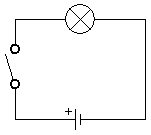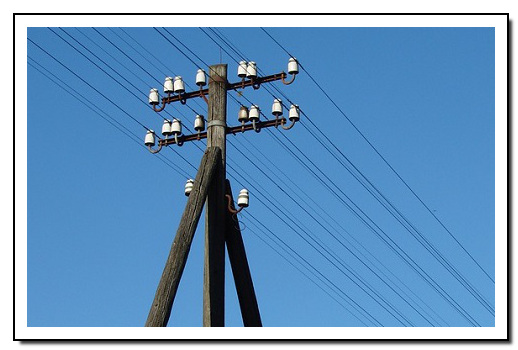Electricity
In physics the term electricity describes everything that is related to charge. All of the phenomena can be sorted into two categories: Electrostatics describes incidents occuring with stationary charges, whereas electrodynamics deals with moving charges.
Charges
Charges are minute atomic particles with a distinct electric charge. These particles can have a negative or a positive charge. Particles with the same charge repel each other, whereas particles with different charges attract each other.
Electrostatics
 Attraction and repulsion are visible in phenomena part of electrostatics. In every day life this is noticeable, when things suddenly attract each other. In paper shreds that stick to plastic folders or in hair that move towards a pullover, charges have been separated. Charge has been transferred from one object to another via friction.
Attraction and repulsion are visible in phenomena part of electrostatics. In every day life this is noticeable, when things suddenly attract each other. In paper shreds that stick to plastic folders or in hair that move towards a pullover, charges have been separated. Charge has been transferred from one object to another via friction.
In the case of a thunderstorm, so many charge carriers have been separated , that the difference discharges abruptly: a lightning develoops. The huge separation of charges balances out by a rapid charge flow.
Electrodynamics - „Electric current“
 When electric charges move, it is called an electric current. A current occurs between two points that make up an electric circuit. This movement of charges is often called „current flow“. (Because current always has an oriented movement, this term is actually a doubling meaning something like 'flowing flow'.)
When electric charges move, it is called an electric current. A current occurs between two points that make up an electric circuit. This movement of charges is often called „current flow“. (Because current always has an oriented movement, this term is actually a doubling meaning something like 'flowing flow'.)
A current develops when a voltage between two points occurs and charges can move freely between them. In the electric circuit the points are called positive pole and negative pole. In metallic conductors electrons set off the current and they flow from the negative to the positive pole. The direction of flow in technics, however, runs from the postive to the negative pole, which is a historical defintion owing to the past lack of knowledge about the question why charges flow. The reason for voltage is, again, the separation of charges. The more separated charges, the higher the voltage.
The strength of an electric current is measured in amperage. It describes how many charges move through a specific part over time.
Conductors and non-conductors

Current flows differently through different materials. One can differ between conductors and non-conductors. Conductors are typically kinds of metal. Charges can flow through metal especially well, which means that they conduct well. Non-conductors (insulators) are bad at conducting currents. Charges can not move freely through them, so current can not flow.
The more conductive a substance is, the less voltage is needed to reach a specific current. This is called a small resistance.
To avoid losing current in long-distance lines, these lines are held in place with insulators.
An exciting topic
On this website you will find numerous puzzles regarding the topic electricity. Just click on the according button on the navigation bar.
